The Top 50 video series has gone over very well and continues with this post about the Phoenix LSA motorglider. If you thought it disappeared and were unhappy about that, have I got good news for you!
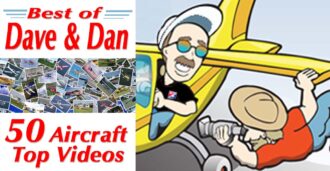
Top 50 Videos are a production of Light Sport and Ultralight Flyer YouTube channel.
I am aware of a very positive development regarding Phoenix that I am working to confirm. As soon as I have fuller details I will update this article but the prospects for LSA motorglider look promising.
In North America, Phoenix Air USA is run by Ed Babovec (email) and he is excited about 2024. …more as it unfolds.
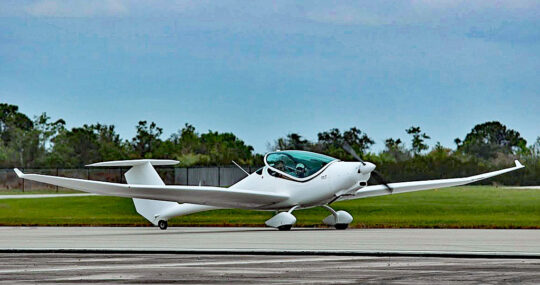
A lean, clean flying machine, Phoenix taxis for takeoff.
Motorgliders as a subset of all aircraft enjoy some very special privileges that endear them to the recreational flying community. In particular, motorgliders do not require an aviation medical. That alone makes them desirable but long-gliding capabilities make them safer to some pilots and simply more enjoyable to others. Let’s look a little more deeply.
ePhoenix (Why Not?)
Equipped a gasoline engine, Phoenix comes with either the 80 or 100 horsepower Rotax ULS that has powered so many aircraft in light aviation. In fact, for this particular aircraft the 80 horse version (image below) is an especially tempting engine, with its nearly-bulletproof operation and its ability to use 87-octane autogas that can be obtained almost anywhere.
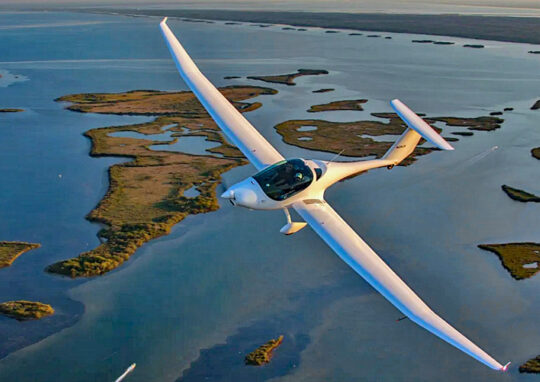
Think about optimal benefits of electric propulsion.
I have long stated that Part 103 ultralights are already the first to be highly functional with electric propulsion, precisely because they are so light and their mission so modest. It’s a simple formula: lighter weight = less batteries = less expense = a workable aircraft in 2024. That Part 103 ultralights aren’t trying to travel long distances makes electric even more viable.
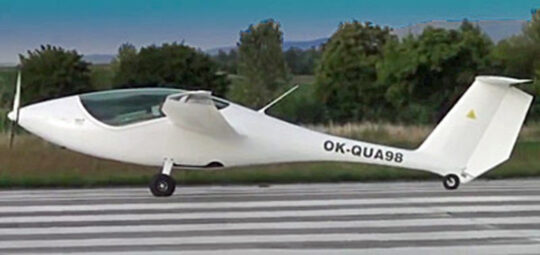
ePhoenix with retractable main gear. Note the smoothly integrated tail wheel.
Beside Part 103, I can think of two other categories that could benefit from electric: aerobatic aircraft and motorgliders or self-launching sailplanes. The former only needs perhaps 20 or 30 minutes of power for an aerobatic demonstration and electric motors offer high torque that aerobatic pilots crave. Motorgliders only need power for a few minutes to get up 2-3,000 feet where lift is easy to catch in a long-gliding aircraft. Neither aircraft type needs long duration from its powerplant.
I’ve had coverage on the ePhoneix motorglider (this article) and a video on the development appears below.
(Gas or Electric)
Landing an Aircraft
that Glides 32-to-1
Motorgliders have various forms of appeal. Some folks are enticed by taking one of these machines aloft and seeing how long they can work the air without a power source. I am one who enjoys that kind of flying challenge.
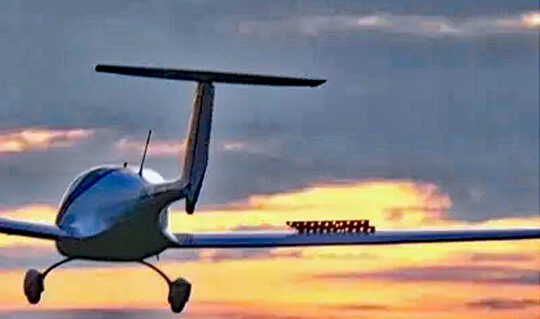
Spoilers on the wings are essential to land a 32:1 gliding aircraft.
Other folks respect that capability but mostly want to fly the aircraft as an efficient cross-country cruiser, one that has a great safety advantage by virtue of its long reach, should the engine go quiet on the pilot.
The challenge with such a long gliding performance is getting one of these special flying machines on the ground without having a three-mile-long runway. Motorgliders come with the controls to handle them safely. However, pilots have to learn some new tricks. Here’s how the factory pilots the expert Phoenix pilots say to conduct landing.
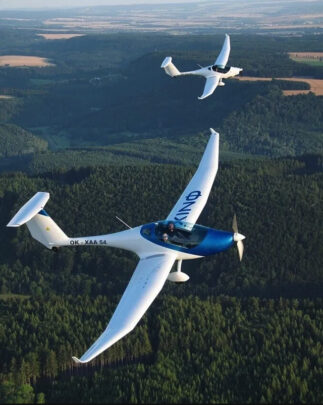
“Phoenix can be landed using the three-point or wheel landing. Wheel landings (landing on the mains and then holding the tailwheel off until speed is reduced) are easier and can be made with more precision than three-point landings but the three-point landing is critical when there is a crosswind blowing (because the tailwheel is on the ground and tracking can be controlled with the rudder pedals).
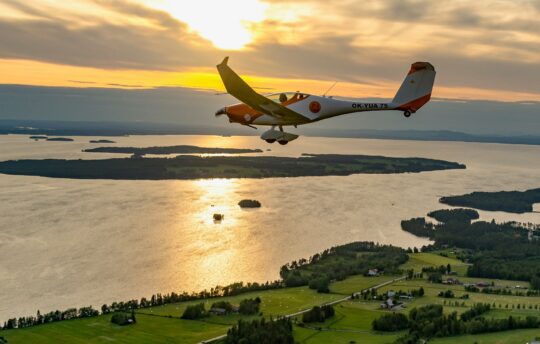
“When the spoilers are fully deployed after touchdown with the short tips, the plane remains planted on the ground with less chance of a bounce even if the plane touches down with extra energy.
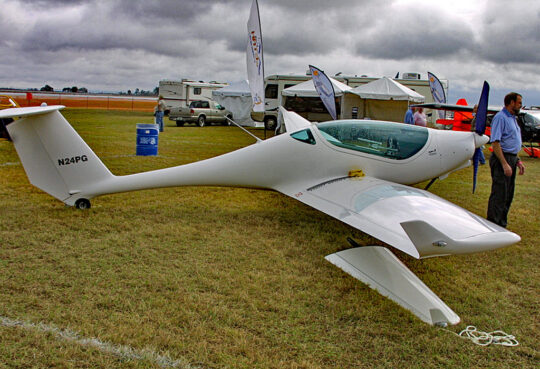
Phoenix can go from a 36-foot span (as shown) to 49 feet by adding plug-in wing extensions; see video for installation.
“Landings involve the same techniques with long or short tips with one major difference. With the long tips and fully deployed spoilers, there is still enough wing producing lift to be able to enter ground effect and make a normal landing. However, there is not enough lift produced with the short tips with full spoilers, so we never enter ground effect with full spoilers with the short tips. We initially teach using a half-spoiler landing technique for both 15 meter and 11 meter spans.”
If not satisfied with the landing aproach, Phoenix experts say to go around. “Close the spoilers and add full power. Phoenix climbs fast and gets you out of the danger zone in a hurry. A balked landing and go-around is a tool every pilot should have and be ready to use.”
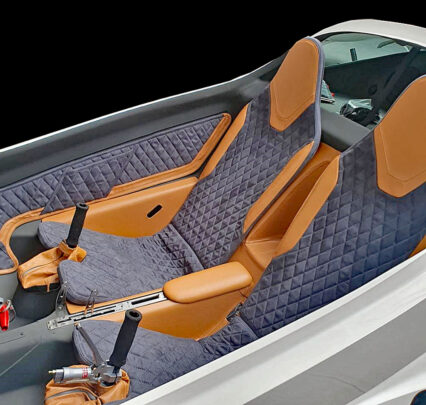
Once you feel entirely comfortable with landing one of these flat-gliding aircraft, you’re ready to go up aloft and use that magic to your benefit. Think of it this way: A 15 meter (49 foot) wingspan Phoenix generates a 32-to-1 glide. That means if you are up only 2,000 feet above the surface, you can still glide more than 10 miles before you’re on the ground.
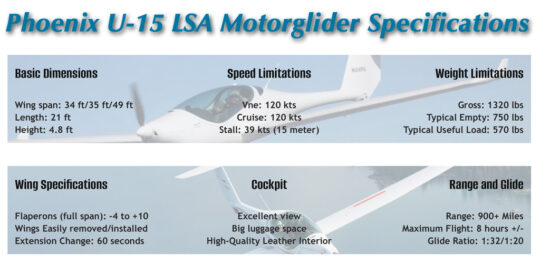
ARTICLE LINKS:
- Phoenix Air USA, contact info and all content on this website
- Article on ePhoenix with electric motor propulsion, on this website
- Watch here for new info… shortly
With more 200,000 views, this 2011 video was and remains a hit. Please note this is a 13-year-old video in every way. I trust you understand technology was not then the quality we take for granted today.
A couple years later, we did this update of an electric, retractable Phoenix at Aero Friedrichshafen n Germany.
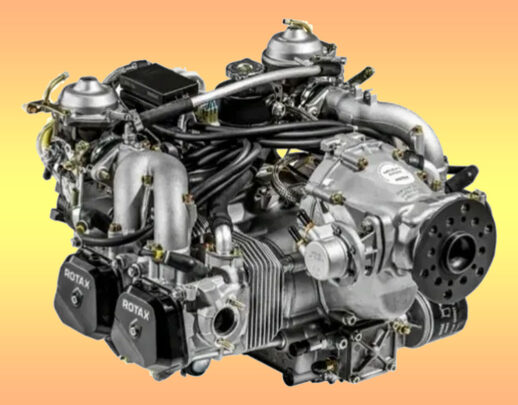
Phoenix is such a sleek aircraft it works well with the 80-horsepower Rotax ULS engine that enjoys a long-proven history and can use 87-octane auto gas, available almost anywhere.



230,000 USD! Ouch, you’re flying too close to the sun!
Hi,
I need an Add On , Self Lunch Glider
Who can help me do that please
Hi Ivan: I see two posts asking this question, so this answer will be duplicated.
You say “add on” implying you want to add propulsion to a glider …that you already have, perhaps? You’ll need to be much more specific but finding an after-market add-on propulsion system is no casual project.
My question is, what is the current status of the ePhoenix? The references are over 10 years old. Given the advances in batteries and electric motors/drives over the past decade, it would seem like there would be more to talk about. I keep eagerly awaiting a reasonable-cost electric aircraft, but no one seems to be producing anything that doesn’t go for less than hundreds of thousands of dollars (except, perhaps, Sonex, but that is still in development).
References in the videos were indeed more than 10 years old. The article has updated info and predicts fresh news in a short time that may address your questions. I invite you to use the contact info provided to directly ask Phoenix Air USA.
Flew these in the early 2000s and helped uncrate and assemble some as they arrived from Europe. All I can say is “DELIGHTFUL” airplane. It may be the only hybrid that actually does everything well. In soaring flight it was very close to my club’s Grob 103 twin which is popular and fine 2 place sailplane. In cruise flight it was smooth, quiet and very efficient, light and responsive on the controls. Makes the average spam can feel like a bread truck. 80hp would be fine for those near sea level but I now live in the desert sw and often take off above 10,000 DA. There really is no downside to the extra power, climb to lift faster equals burn about the same fuel, pull the power back equals burn about the same fuel. Come resale time, some buyers might be put off by the weaker engine. Oh and unless they changed it, the long wingtips can be stored behind the seats, Fly fast on the short wingtips and put the long tips on to soar out west! Last, she is a sweetheart to land, different but no vices just need to transition sensibly.
Thomas, just to clarify. The winglets can be installed behind the seats but not the wing extensions that get you from 10.5 to 15m wingspan. For both configurations the VNE is 220km/h. With the log wings you consume more due to the increased drag. The fuel consumption difference between the 80 & 100hp is real. Assuming that you fly along the propeller demand curve and you use on the 80Hp the 40kW demand point @ 5000rm it’s 15l/h. For the 100hp the 40kW demand is at 4700rpm and you burn 17l/h. Otherwise fully agree with your assessment.
Dan, I’m grateful for your article. The new manufacturer will certainly help to give this product the boost that it deserves. I’m a proud owner of 49U15 with 650 hours on the motor, about 100 gliding, and 500 landings. Last year we traveled from France to CapNorth with 2 Phoenix’s in short wing configuration. I echo your recommendation for the 80 horsepower. The VNE of 220 kilometer per hour (≈120 knots) does not require 100 horsepower. What’s striking is the difference in fuel consumption. During our flight to Norway we saw as much as 1.5 gallon per hour difference. So on a 5 hour flight I have about a half hour more autonomy! Will you be at Aero?
Glad you enjoy the article and your flight in Phoenix.
I will not be at Aero for its 30th anniversary in 2024, my first miss (other than for Covid) in many years. I am taking a one-year sabbatical from airshows.
Looks like a wonderful airplane. I got my glider rating (add-on) in a motor-glider (w/ Russ Hustead in Payson AZ) and it was some of the most fun flying I’ve ever done. An electric motor glider seems like a great idea for pilots that mostly want to go soaring
I couldn’t believe after reading the whole article, that nowhere was the price ever brought up. Very disappointing, as such information should be published anytime there is a review of a product. I worry when I read a lot but the pricing remains opaque or hidden……
Thanks for the quick read. Please stay tuned. I made a request for current pricing but the news hinted in the article may affect prices. I will update this article as soon as news is confirmed.
In the FAQ section on their web site it says 195,000 to 215,000
I am aware of those prices. However their upcoming news may have some effect on them, especially given that the prices of almost everything have gone up dramatically in recent years.